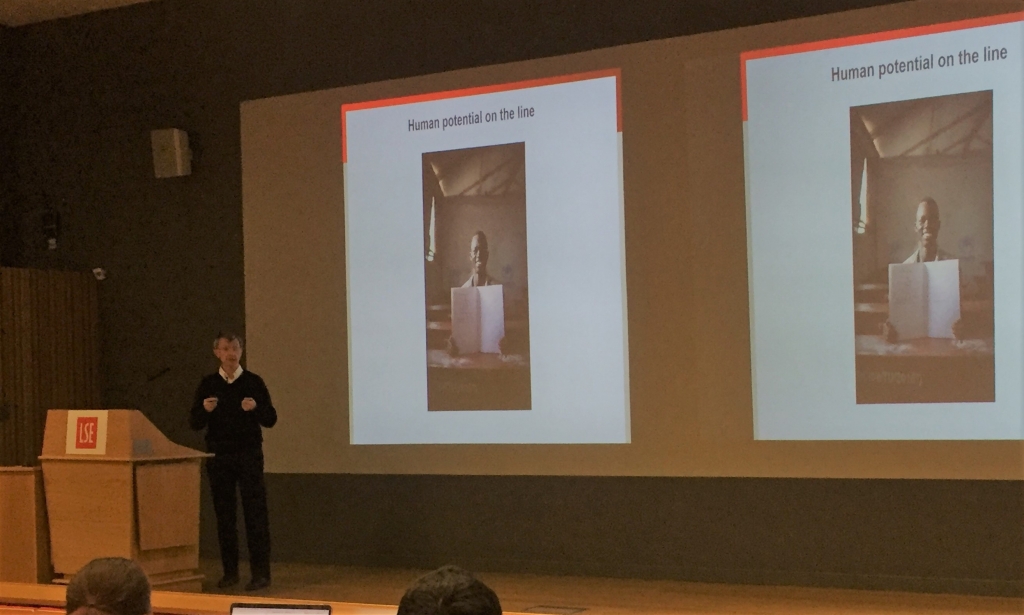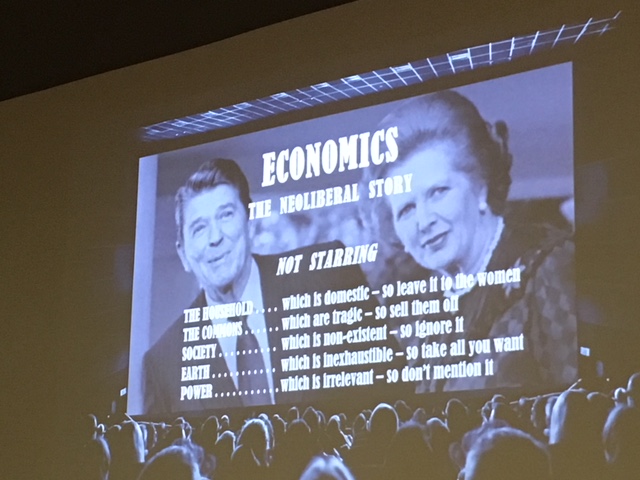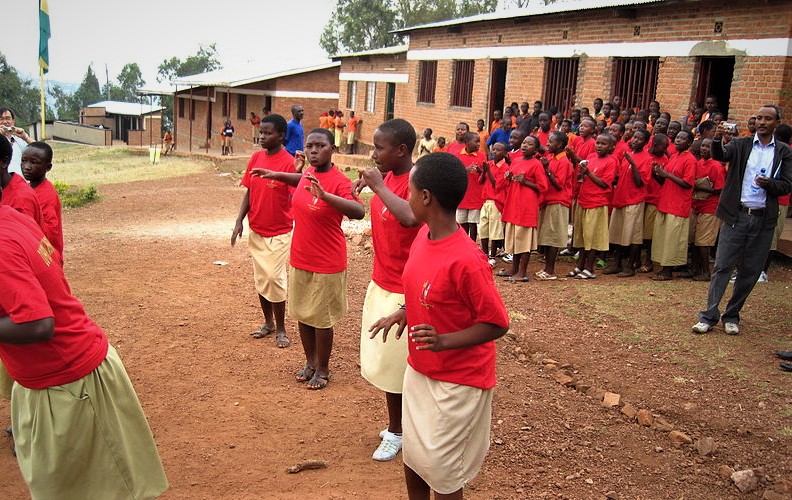MSc Development Management student, Haisley Wert reflects on a lecture by Kevin Watkins, Chief Executive of Save the Children UK, about ending the culture of impunity for children in areas of armed conflict.
“If it were easy to do, it would’ve been done by now”.
Kevin Watkins’ words couldn’t have spoken a greater truth. As the CEO of Save The Children, and a veteran of the UN, ODI, and academia, he knows intimately the difficulty of protecting children’s rights in armed conflict. At the very gnarled heart of the problem is a culture of impunity— when commanders and countries don’t think they will be held accountable to norms, under perverse incentives, they transgress. With the philosophy that change can be affected in several dimensions, he takes heart in campaigning for clear political goals. Eroding the culture of impunity and stigmatizing crimes takes grit.
Today’s conflict is history transmogrified and amplified. Thematically dominated by intrastate clashes, identity-based violence, and militant groups, these new characterizations of conflict exacerbate the scale of violence. Right now, 250 million children in the world live in conflict-affected areas. About a fifth of these children are displaced, which means that we are living with the highest displacement level of children in all of history. But numbers alone are hard-pressed to tell a story.

Drawing on several narratives, Watkins introduced us to young conflict zone survivors. A photograph of a man named Daniel projected onto the wall behind him: young and grinning, he proudly holds open a book to an audience beyond the camera shutter. The science text is quite arguably his most prized possession, as he risked his life for it when fleeing from the South Sudanese army. But as a refugee in Northern Uganda, he has no means of accessing an education. His dream of being a scientist pends on the access to human capital that both states failed to provide.
Daniel’s photograph is a truthful representation. Other children, too, are barred access to an education because of their refugee status. Still others are oppressed by the torment and trauma of what they have witnessed. And again, other children suffer from incapacitating hunger. Purposefully compiled photographs make visible the manifestations of violence. By pulling the periphery into the centerpiece, the reaction of individual incredulity can amass into societal stigmatization.
To intercept an easily crowd-sourced suggestion, I’ll contend that international laws do exist to protect children from atrocities, and they are well-scaffolded. The International Humanitarian Law, the International Criminal Law, and the International Human Rights Law form a robust advocacy framework. But, as Watkins explained, a lack of declared rights is not the problem at stake. Rather, “it’s a deficit of compliance with well-established and well-understood norms and values”. So, the culture of impunity is fostered in spite of protective law. Indeed, culture proves messier to change than codes.
This is where Save The Children comes in. As an INGO, they have a responsibility to look to the horizon, beyond the change-lag of norms behind declarations. As an internal framework, they maintain that the culture of impunity can be changed through three interlinked dimensions: laws and authority, norms and rules, and beliefs and behavior. When a potential criminal wagers that they will be held responsible for a crime — by the law, public, or their own self — they are less likely to commit it.
This is the first in a series of articles from International Development students for the Cutting Edge in Development Thinking and Practice lectures. The lecture series is open to all postgraduate students at LSE, and introduces them to pressing issues in the field of International Development.
Haisley Wert is an MSc candidate in Development Management at the LSE. Previously, she studied Latin American Studies at Smith College, with a focus on food systems, agriculture, and the environment.
The views expressed in this post are those of the author and in no way reflect those of the International Development LSE blog or the London School of Economics and Political Science.






1 Comments